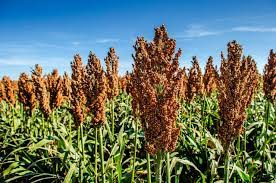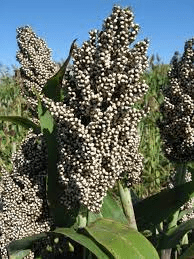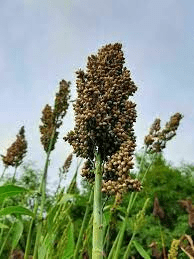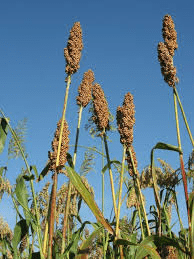Sorghum styles refer to the various morphological and structural variations found in the flowering parts of sorghum plants, which are a crucial element in plant reproduction. Sorghum (Sorghum bicolor) is a versatile cereal crop cultivated worldwide, primarily for its grain and fodder. Understanding its floral structures is essential for both agricultural practices and breeding programs aimed at improving yield and resistance to pests and diseases.
Sorghum is characterized by its complex inflorescence structure known as a panicle. The panicle is a branched cluster of flowers, and its arrangement and development are pivotal to the plant’s reproductive success. Sorghum styles are specifically the female reproductive structures that play a significant role in the pollination process. The style is a slender tube that connects the ovary, where the ovules are located, to the stigma, the part of the flower where pollen lands.
In sorghum, the style’s length and morphology can vary among different varieties and can influence the efficiency of pollination. The stigma, situated at the top of the style, is usually branched or feathery, increasing its surface area to capture pollen grains. This structure is crucial for ensuring that pollen reaches the ovules for fertilization. The style of sorghum is typically short, which facilitates close proximity of the stigma to the anthers (the pollen-producing part of the flower), thereby enhancing the likelihood of successful pollination.
Sorghum flowers are generally bisexual, meaning each flower contains both male and female reproductive organs. However, the separation of these organs into different parts of the inflorescence helps in preventing self-pollination and promotes cross-pollination. This is where the style’s role becomes significant. By positioning the stigma in such a way that it can capture pollen from neighboring plants, the style aids in genetic diversity, which is beneficial for crop resilience and adaptability.
The variation in sorghum styles also has implications for the plant’s interaction with pollinators and the environment. For instance, some sorghum varieties have styles that are adapted to attract specific types of pollinators, which can enhance the efficiency of the pollination process. In contrast, other varieties may have styles that are more suited to wind pollination, which is another common method for sorghum.
Moreover, the study of sorghum styles extends to their role in breeding programs. Breeders may select for specific style characteristics to improve traits such as drought resistance or yield. For example, styles that are more effective in capturing pollen under varying environmental conditions can contribute to higher seed production and better crop performance.
Understanding the detailed structure and function of sorghum styles helps in the development of more efficient cultivation practices and breeding strategies. By focusing on the specific traits of the style, researchers can enhance sorghum’s productivity and adaptability, ensuring that this important crop continues to meet the demands of a growing global population.
The Economic Importance and Uses of Sorghum Styles

1. Crop Breeding: Sorghum styles play a key role in crop breeding programs aimed at improving yield and disease resistance.
2. Genetic Research: Understanding sorghum styles is crucial for genetic research and developing improved sorghum varieties.
3. Pollination: Sorghum styles are essential for the pollination process, which affects the overall productivity of sorghum crops.
4. Seed Production: Healthy and well-developed styles contribute to the production of high-quality seeds.
5. Crop Management: Knowledge of sorghum styles helps in better crop management practices to enhance growth and yield.
6. Fertility Studies: Sorghum styles are studied in fertility research to understand plant reproduction and improve soil management.
7. Agricultural Innovation: Research on sorghum styles leads to innovations in agricultural practices and technology.
8. Disease Resistance: Studying styles helps in identifying and breeding sorghum varieties resistant to diseases.
9. Yield Improvement: Improved understanding of sorghum styles contributes to higher crop yields through better plant breeding techniques.
10. Sustainability: Effective use of sorghum styles in breeding programs supports sustainable agriculture practices.
11. Education and Training: Knowledge about sorghum styles is used in educating and training farmers and agricultural professionals.
12. Crop Diversity: Research on sorghum styles contributes to maintaining and enhancing crop diversity.
13. Food Security: Improved sorghum varieties with better styles support food security by increasing crop productivity.
14. Biofuel Production: Sorghum styles are part of research efforts to enhance biofuel production from sorghum.
15. Soil Health: Understanding sorghum styles helps in developing practices that improve soil health.
16. Environmental Adaptation: Research on sorghum styles aids in developing varieties that can adapt to various environmental conditions.
17. Economic Development: Enhanced sorghum varieties contribute to the economic development of regions dependent on sorghum cultivation.
18. Scientific Research: Sorghum styles are important in scientific research aimed at improving crop genetics and physiology.
Read Also: Fish Biology: Anatomy, Physiology, Embryology and Endocrinology
The Products and By-products That Can Be Derived From Sorghum Styles

1. Improved Sorghum Varieties: Developed through research on styles to enhance yield and resistance.
2. High-Quality Seeds: Produced from sorghum varieties with well-developed styles.
3. Disease-Resistant Varieties: Sorghum varieties bred for resistance to diseases.
4. Biofuels: Sorghum varieties optimized for biofuel production.
5. Crop Management Techniques: Developed from research on sorghum styles for better crop management.
6. Fertilizer Recommendations: Based on studies of styles and soil interaction.
7. Educational Materials: Training resources for farmers and agricultural professionals.
8. Sustainable Farming Practices: Innovations in farming practices derived from sorghum styles research.
9. Soil Health Products: Practices and products developed to improve soil health based on sorghum research.
10. Environmental Adaptation Strategies: Methods for adapting sorghum to various environmental conditions.
11. Genetic Tools: Tools and techniques for genetic improvement of sorghum based on styles.
12. Agricultural Technology: Technologies developed to support sorghum cultivation and breeding.
13. Crop Diversity Initiatives: Programs and initiatives to maintain and enhance sorghum crop diversity.
14. Food Security Solutions: Strategies to improve food security through better sorghum varieties.
15. Economic Development Programs: Programs to support economic development in sorghum-dependent regions.
16. Scientific Publications: Research papers and articles on sorghum styles and related studies.
17. Training Programs: Educational programs for farmers and researchers on sorghum styles and their applications.
Read Also: The Variety of Fish Body Shapes
Frequently Asked Questions (FAQ’s) About Sorghum Styles

1. What are sorghum styles?
Sorghum styles are the female floral parts of the sorghum plant that play a crucial role in the pollination process.
2. Why are sorghum styles important in crop breeding?
They are important for improving crop yield, disease resistance, and overall plant health through better breeding practices.
3. How do sorghum styles affect seed production?
Healthy styles ensure successful pollination, which leads to the production of high-quality seeds.
4. What role do sorghum styles play in genetic research?
Styles are studied to develop improved sorghum varieties and understand plant genetics.
5. Can sorghum styles impact crop yield?
Yes, well-developed styles contribute to higher crop yields by enhancing pollination efficiency.
6. How does research on sorghum styles contribute to sustainability?
It helps in developing practices and varieties that support sustainable agriculture and environmental health.
7. Are sorghum styles involved in disease resistance studies?
Yes, research on styles helps in identifying and breeding varieties resistant to diseases.
8. How does knowledge of sorghum styles support education and training?
It provides the basis for educational materials and training programs for farmers and agricultural professionals.
9. What products can be derived from research on sorghum styles?
Products include improved sorghum varieties, high-quality seeds, and technologies for better crop management.
10. How does understanding sorghum styles contribute to economic development?
Enhanced sorghum varieties support economic growth in regions dependent on sorghum cultivation by increasing productivity and sustainability.

